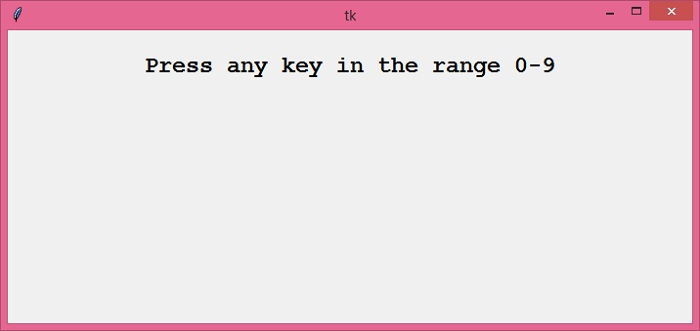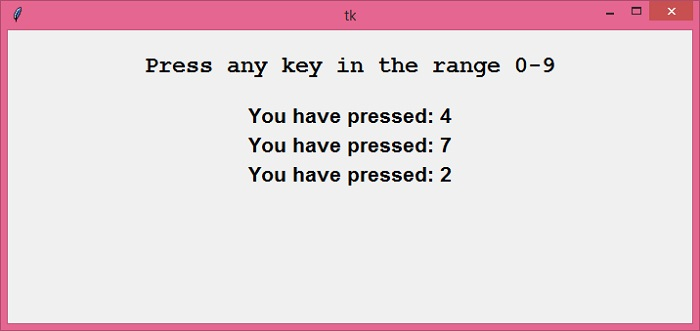
 Data Structure
Data Structure Networking
Networking RDBMS
RDBMS Operating System
Operating System Java
Java MS Excel
MS Excel iOS
iOS HTML
HTML CSS
CSS Android
Android Python
Python C Programming
C Programming C++
C++ C#
C# MongoDB
MongoDB MySQL
MySQL Javascript
Javascript PHP
PHP
- Selected Reading
- UPSC IAS Exams Notes
- Developer's Best Practices
- Questions and Answers
- Effective Resume Writing
- HR Interview Questions
- Computer Glossary
- Who is Who
How to bind all the number keys in Tkinter?
While developing a Tkinter application, we often encounter cases where we have to perform some specific operation or event with the keystrokes (on keyboard). Tkinter provides a mechanism to deal with such events.
You can use bind(<Key>, callback) function for each widget that you want to bind in order to perform a certain type of event. Whenever we bind a key with an event, the callback event occurs whenever a corresponding key is pressed.
Example
Let's consider an example. Using the bind("", callback) function, we can also bind all the number keys to display a message on the screen such that whenever a user presses a key (1-9), a message will appear on the screen.
# Import required libraries
from tkinter import *
# Create an instance of tkinter window
win = Tk()
win.geometry("700x300")
# Function to display a message whenever a key is pressed
def add_label(e):
Label(win, text="You have pressed: " + e.char, font='Arial 16 bold').pack()
# Create a label widget
label=Label(win, text="Press any key in the range 0-9")
label.pack(pady=20)
label.config(font='Courier 18 bold')
# Bind all the number keys with the callback function
for i in range(10):
win.bind(str(i), add_label)
win.mainloop()
Output
Running the above code snippet will display a window with a Label widget.

Whenever you press a key in the range (0-9), it will display a message on the screen.


